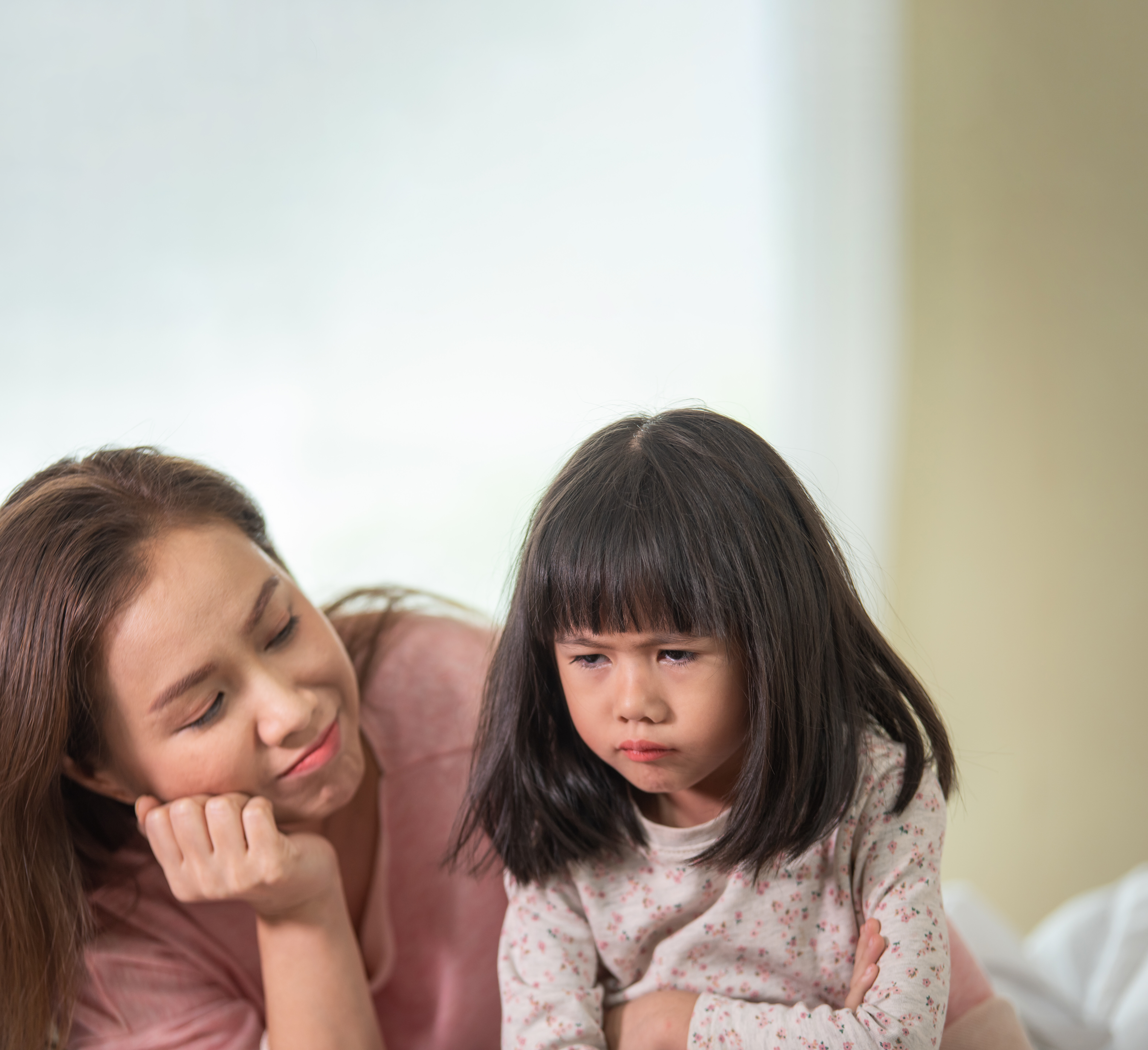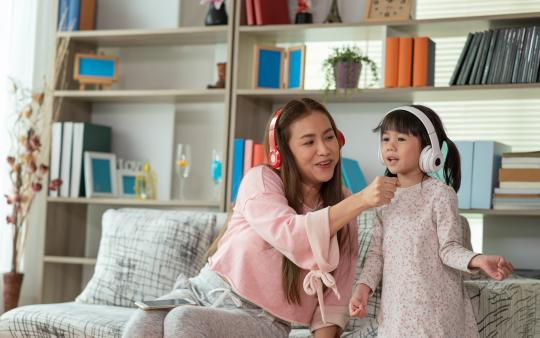It is not unusual to see a child stomp in frustration, yell when they’re upset, and drag their heels when they feel hurried. Even after a good or uneventful day at daycare or school, meltdowns may appear later at home in the form of resistance over chores or homework. Parents may feel bewildered by the extreme emotional reactions they witness in their kids—after all, haven’t they been told a hundred times to use their words and communicate clearly to get what they want?
Emotions are invisible and mysterious, while actions are anything but and often distract us from the real problem. What we need to remember about emotions is that they, themselves, are not problems, but they are, in fact, trying to solve them when they rise up through our kids and flow through them. The challenge is that sometimes the way a child expresses their emotions can create problems for the people around them. If you want to know what emotion they are experiencing, then you only need to consider their behaviour and how they are moving in the world. A child who feels secure may venture out to play, getting lost in discovery and exploration; but a scared child will run for safety to a parent and a frustrated one may angrily lash out when feeling thwarted.
When a child’s behaviour is difficult, we can become preoccupied with reinforcing rules and expectations while losing sight of how emotions, a brilliant system of communication, are driving a child from within. How we respond to a child when their behaviour is emotionally fuelled is key to helping them become more mature—and therefore less “controlled” by strong feelings—but many “disciplinary” practices can make matters worse and fan the flames of upset, leaving us not only no further ahead, but actually working against us.
THE NECESSITY OF EXPRESSION
Emotional health cannot be achieved if emotions cannot be expressed. The force they exert compels them to come out of us in some way. Young children are just learning about their emotions and are naturally often at a loss for words or any insight into what they are feeling. With maturity we acquire a vocabulary to match our feelings and use it to communicate them in (hopefully) more respectful ways. But this is the end goal and never the place we start from. This is where parents and caretakers must come in and help teach not just words, but a language of the heart.
Simply shouting, “Cut it out!” and “Calm down!” can do more harm than good. Just like a pressure cooker, when emotions are bottled up, they often lead to uncontrolled explosions. The idea that we must, from day one, suppress our emotions fails to recognize that they need to move through us so they can communicate that something is working or not working, especially when we’re too young to articulate it. Our emotional world is a source of intelligence when it come to our needs, and it will do anything in its power to meet those needs.
What many people don’t realize is that young kids can’t regulate their emotions due to immature brains. It takes five to seven years of healthy brain development to create the neural pathways required to integrate strong emotions and provide impulse control. Until that time, adults—and, surprise!, not preschooler brains—are the only tempering agent children have to help regulate their emotions and behaviour. The crux of this job is only to prevent them from hurting themselves or others with impulsive reactions, and not to prohibit them from having feelings or expressing them. Methods like separation punishment, withholding affection, or yelling are solutions that solve nothing in the long term and only serve to cultivate a deeper uncertainty about your relationship.
THE DANGERS OF SUPPRESSION
We need to make it safe for our kids to express their emotions and convey that we are there to help them through their big feelings. The goal is not to try and make our children feel anything differently, it is rather to support and model the movement of those emotions so they can learn to understand and exert influence over their expression.
One key to supporting a child is to make sure our reactions to their emotions don’t create more distress for them (and therefore, in turn, us) nor communicate a diminished desire to care for them. If their behaviour leads to an unsteady relationship with an adult, then their brain may “press down” on their emotions in order to preserve their connection. This is a costly move—one that inhibits emotional development and prevents the adult from being able to help forward maturity in the child by creating an atmosphere of insecurity.
“Children don’t say, ‘I had a hard day. Can we talk?’ They say, ‘Will you play with me?’”
- Lawrence Cohen
The prevalent forms of discipline used with children either take away what a child cares about or remove them from the people they want to be close to. These tactics communicate that there is no expression without undesirable repercussion: What you say or do may be held against you where it hurts the most. If you have to be “good”, even when you’re feeling bad, and expressing your feelings leads to separation, then emotional expression will indeed decrease, but in its place will easily grow more insecurity, anxiety, and aggression.

THE PATH TO MATURE EXPRESSION
The good news is there are many natural ways we can make room for our children’s emotions, nurture their brains to manage emotions well, and preserve their well-being. It is also possible to set limits with children while still conveying we are there to help with their upset. The objective is not to stop expression but to give it some room to move, and, importantly, to avoid any damage to the relationship so that development continues to be allowed to move in a healthy direction guided by a capable and trusted parent.
Play It Out
One of the natural ways children express emotion is during play where there are no real outcomes or consequences. As developmentalist Lawrence Cohen states, “Children don’t say, ‘I had a hard day. Can we talk?’ They say, ‘Will you play with me?’” If we want to help children release their emotions, then we need to create the conditions for play.
True play is when a child is free to engage with their surroundings and nothing is taken at face value. Their frustration is expressed through creating, building, destroying, or transforming objects around them. Emotions such as alarm can be discharged through play that incorporates some fear like pretend monsters, being chased or rescued, having to hide to avoid capture, or surviving on your own. The child is able to express themselves without repercussion in the safety of play, often emerging from it softer and more emotionally vulnerable.
The role of adults is to provide and protect the places where children can play and invite them to experience music, stories, art, dance, or motion, all of which help their emotional systems discharge and recalibrate. The research on the correlation between loss of play and emotional problems in kids is substantial. The message is clear: Caregivers need to be play advocates when it comes to children’s emotional health and well-being.
Heart to Heart
To come to a child’s side means to take a supportive role and not an adversarial one when dealing with their behaviour and emotion. While we don’t have to agree with them about their behaviour or even the “reasons” for it, we can connect with them at the heart level and try to empathize with them there. Acknowledging the emotion that is underneath their behaviour will increase their sense of connectedness to us. When we say, “You seem like you had a long day at school and are tired and frustrated” or “Help me understand what is stirring you up” we are inviting them to put into words the emotions that are driving them—which is both exactly what they need to hear and exactly what we want to teach. When we put the focus on the emotion instead of the behaviour and encourage them to express themselves, we learn to work together to find a way through the challenges.
It is also important that we don’t focus on our own emotions about their behaviour. We don’t need to communicate to our children how we feel, which could further overwhelm them and give them more emotion, not less, to deal with. It is also not our children’s job to care for our feelings. In revealing our struggles with a child, we may inadvertently convey that we don’t know what to do with them, thus alarming and frustrating them further.
As we come alongside and help them find words for their experiences, and not their hits or screams, we will be teaching them a language of the heart. With words to communicate their emotional world and brain development that allows impulse control, both of which happen in supportive and safe environment, a child will naturally become more emotionally mature. I still remember the day my daughter proudly told me that her hand wanted to hit something because she was frustrated but it didn’t and that this was a good thing.

Daily Debrief
There are a number of daily rituals that help us check in and debrief with our kids on their experiences and emotions. There is something unique about bedtime and having a parent’s undivided attention that makes a child want to talk. It is often here they may tell you about hard parts of their day or other stories about how they are feeling. As we listen and reflect on their emotions, we will be helping them to make sense of things and forward their emotional development.
Morning rituals can also help a child settle into their day, including reading books at cuddle time. Slowing down and making room for connection and orienting to the plan for the day without rushing can go a long way toward preventing emotional upset and upheaval. Shared mealtimes are an excellent time to check in with each other. Sometimes the after-school pick up or ride home from daycare is a good time to connect and listen too.
There is nothing like the force of an immature child to test the emotional maturity of adults. The challenge is not to let our own emotions get the better of us and take it out on them. Emotional maturity takes time and patience and is every bit as sophisticated as cognitive development. Kids need loving support, emotional guides, and caregivers who show they believe that maturity is around the corner by allowing their emotions to play out safely through their natural course.
You may also enjoy: How to Handle Your Child's Frustration, Anger, and Aggression, Caring Connections: Teaching Children to Apologize Sincerely, and Helping Your Child To Cope With Anxiety.






